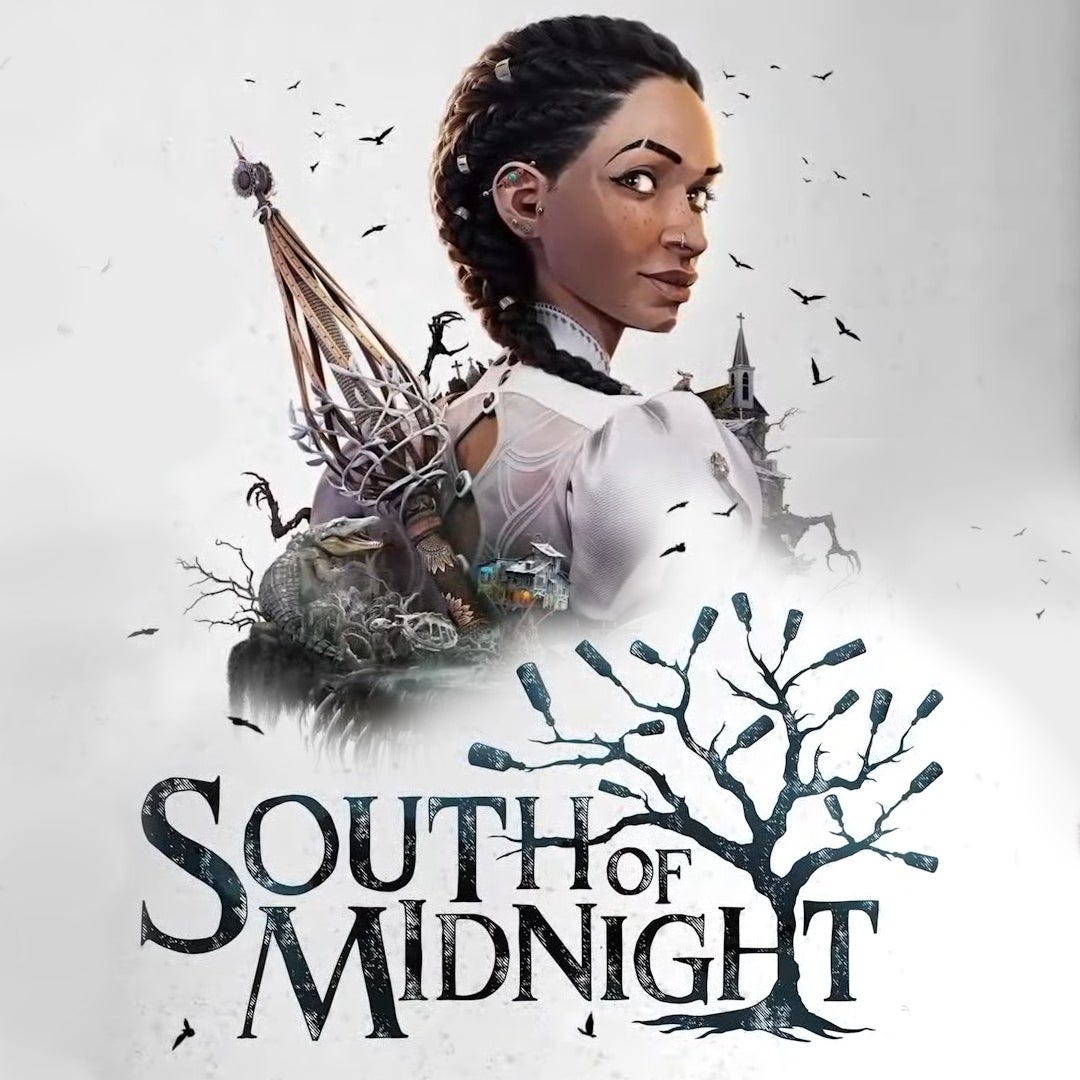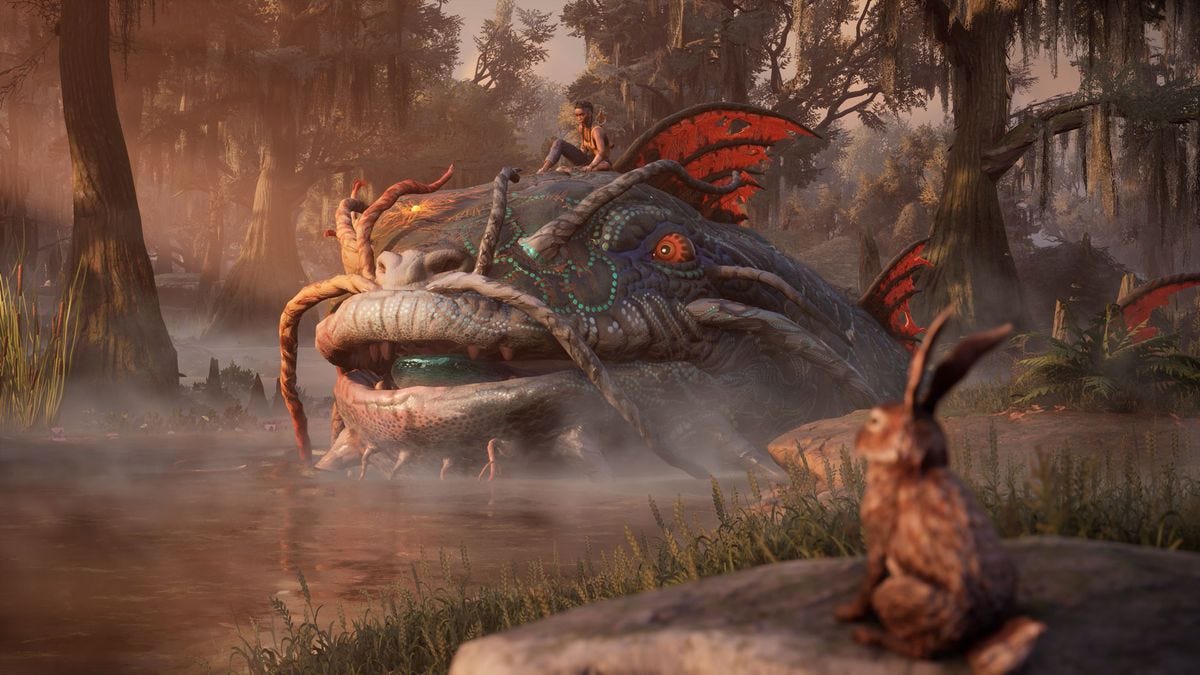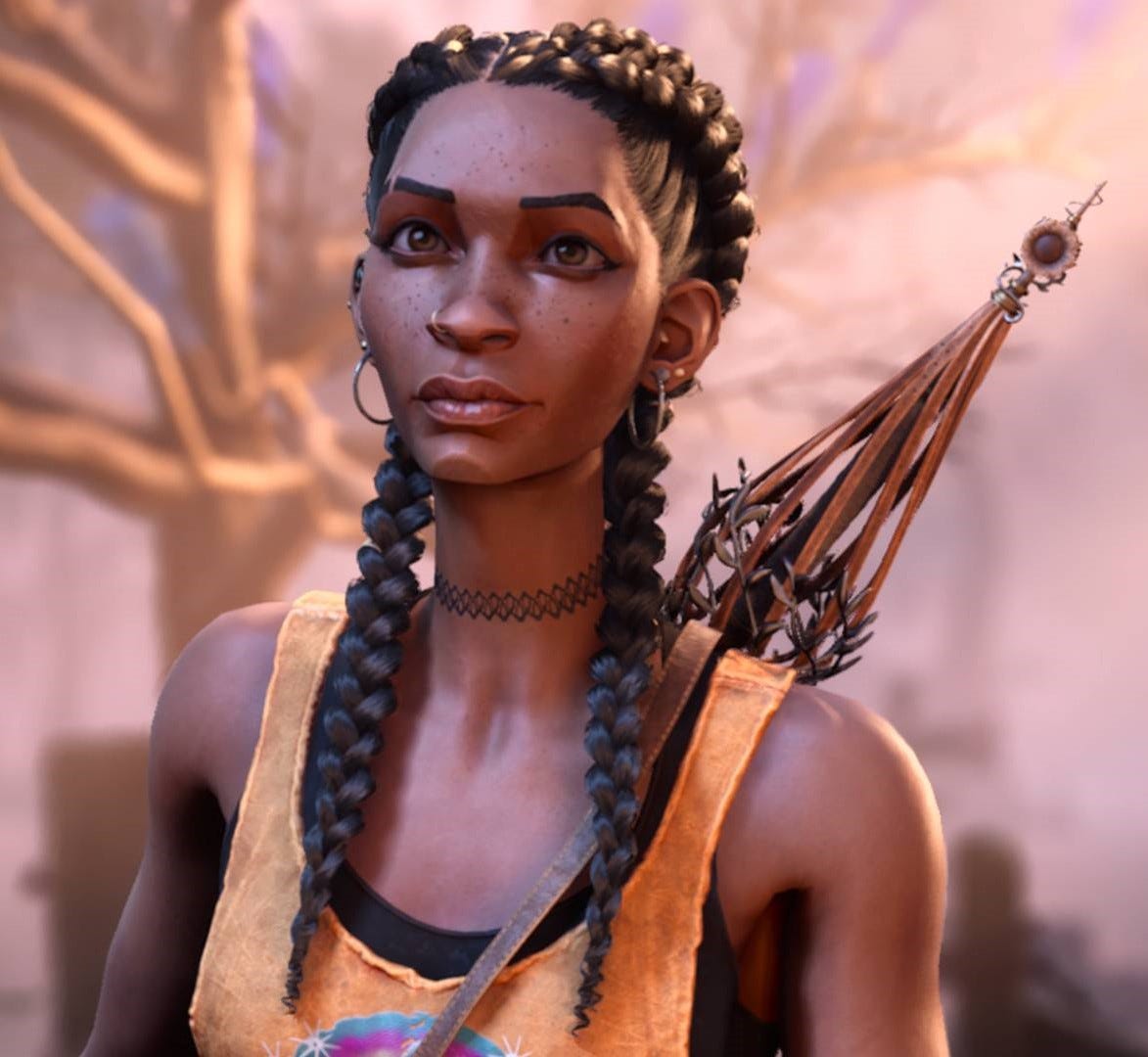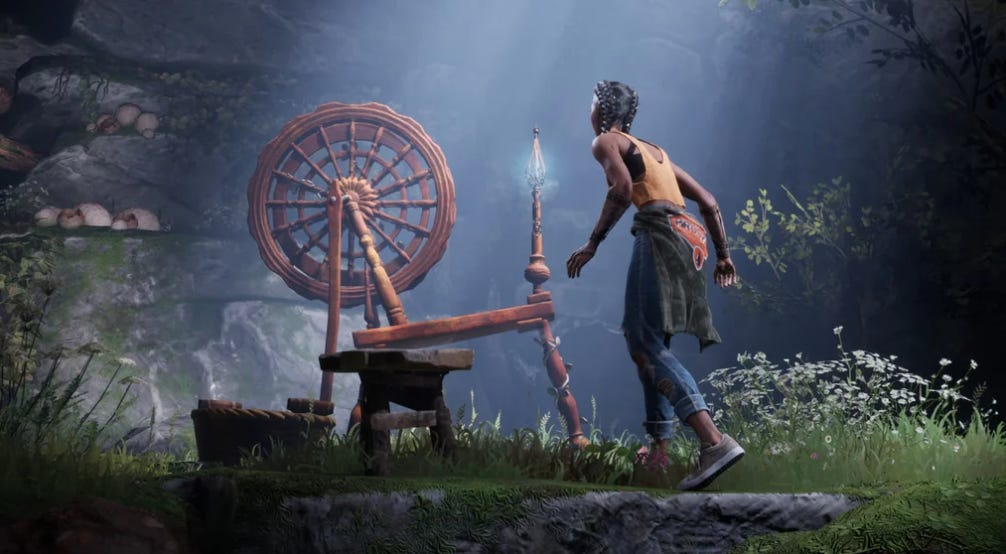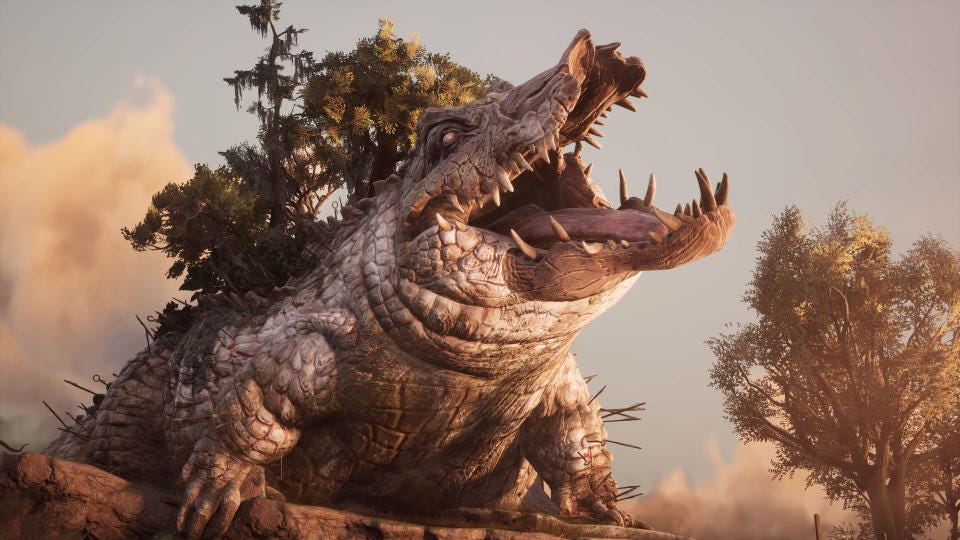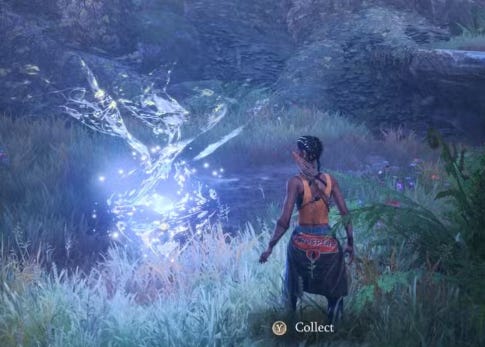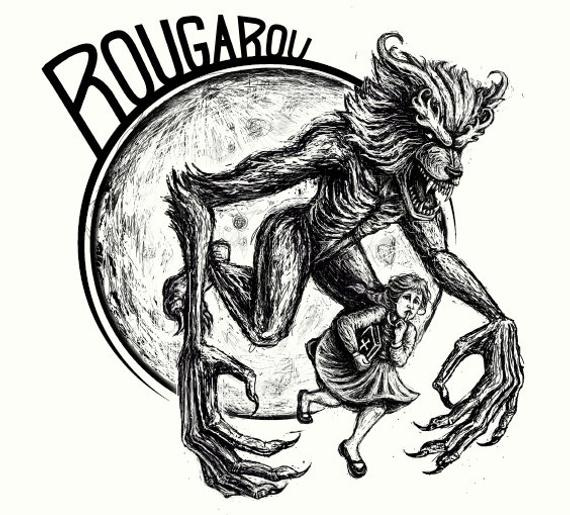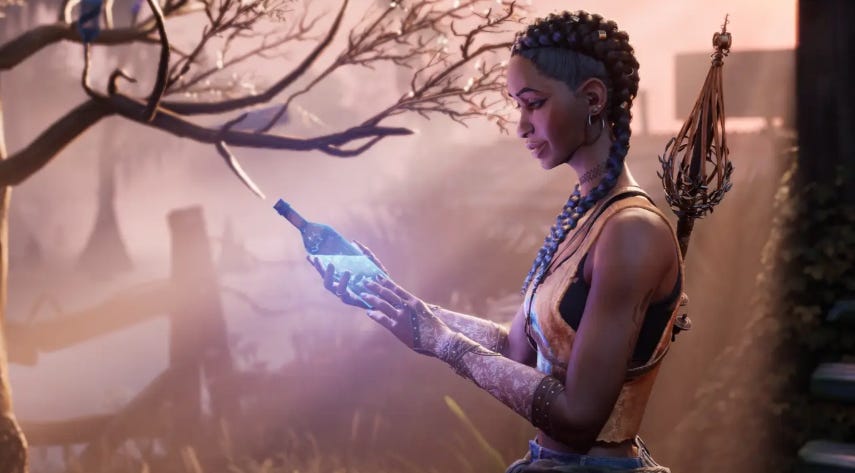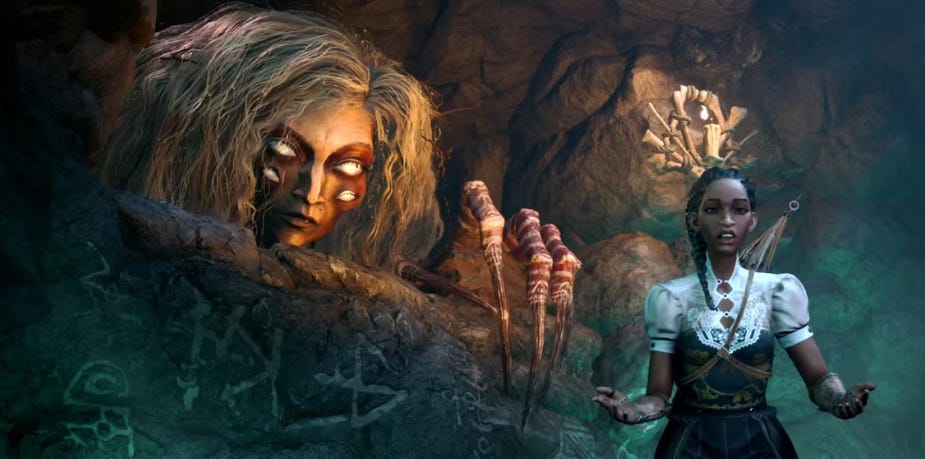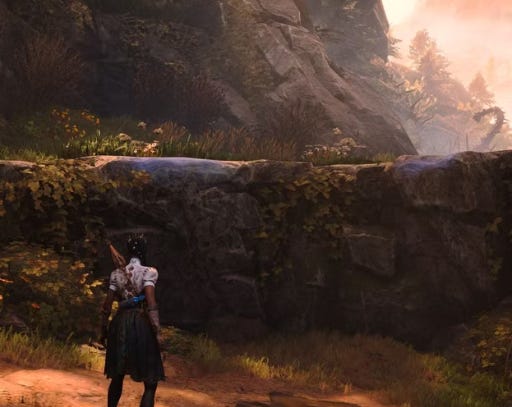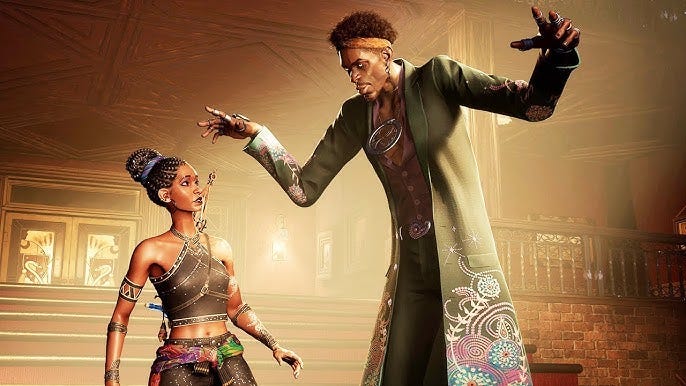The Mythology behind South of Midnight
South of Midnight is an action-adventure 3D platformer game made by Compulsion Games. It came out on the 8th April 2025 and I love it! In the game, you play a teenage girl called Hazel as she explores her hometown in the Deep South to try and find her mother, after she was washed away with their house in a massive flood.
Gameplay mechanics-wise, there’s nothing extraordinary about South of Midnight. It plays the same way you’d expect other 3D platform adventure games to play. BUT that’s not why I love it!
The reason I love this game so much is because of the story, the characters and, especially, the lore and mythology that inspired this game! A lot of the characters you’ll meet in South of Midnight are based on mythological creatures from Deep South folklore.
So, I want to shed some light on the mythology behind some of those characters, as well as some other elements of the game. As a fantasy writer myself, I love hearing about old folktales and mythology. I find old stories from any culture so inspiring, so maybe you can find some inspiration in this game’s lore too!
However, before we continue: Spoiler alert! I won’t talk too much about the story itself, but some of the characters I’ll be mentioning don’t appear until later in the game. So, if you want to experience the game for yourself without any prior knowledge of what to expect, don’t read on! Go and play the game for yourself first!
1. Weaving
In the game, Hazel discovers she’s a Weaver; a person chosen by the land to take care of the Grand Tapestry, the very fabric of the universe. The Deep South has a long history of quilting and weaving. The tradition started out of necessity, when colonists made imported textiles hard to come by. But over time, it became an art form, a way for people to display their dreams, beliefs, struggles and achievements.
During the American Civil War, some quilts were even made to hide coded messages within to help slaves free themselves. In the Gee’s Bend area of Alabama’s rural Black Belt, quilting became a way for Black women to gain economic independence as well. Needless to say, the art of weaving is therefore very historically and culturally important to many areas of the Deep South.
2. Two-Toed Tom
In the game, Two-Toed Tom is a massive alligator that you have to evade and eventually fight. In reality, he’s a cryptid in Southern folklore, with sightings reported in Florida and Alabama. He’s still a massive alligator in the folklore, who’s been around since the 1920s and apparently can’t be killed. He’s said to have a hunger that can never be quenched, and he mostly dines on cattle since he’s that big!
A steel trap took three of his toes on one of his feet, leaving only two toes behind, hence his name. However, if you play the game, you’ll discover that he lost his toes another way. He also sometimes goes by the nickname ‘Red-Eye’.
3. Floofs
In the game, Floofs are these ghostly-looking lights you can collect to upgrade your weapons with. They’re most likely based on Fifolets or Fool’s Fire; spectral lights that misdirect people trying to traverse the swamps of Louisiana. It’s believed that they’re the souls of unbaptized children, unable to enter heaven, but too innocent to be sent to hell. Therefore, they roam the swamps instead, lost and confused.
4. Rougarou
In the game, you discover that one of the characters is a Rougarou, a half-man, half-beast creature. In Cajun culture, a Rougarou is basically a werewolf. Sometimes the person can shapeshift willingly between their human and wolf form, sometimes they can’t. Some say that people become Rougarou when cursed, and the only way to free themselves from the curse is to drink the blood of their victims. Without spoiling the plot too much, the beast form of the Rougarou in the game is, surprisingly, not a wolf.
(Art by Claudia Rodriguez - @WroughtInk)
5. The Bottle Tree
In the game, Hazel takes a blue bottle from a bottle tree. She then uses this bottle to collect painful fragments of people’s lives to help her repair the tears in the Grand Tapestry. In West African and Creole culture, placing bottles on the ends of branches in a tree is supposed to protect your home at night from evil spirits.
The spirits are attracted to the bright colours of the bottles, then they get trapped inside the bottles, and die in the morning sun. You would normally place these bottles on the branches of a Crape-myrtle tree.
6. Huggin’ Molly
In the game, Huggin’ Molly is a giant woman/spider hybrid creature that appears to enjoy kidnapping children. However, in original Alabama folklore, she looks very different! She’s actually the ghost of a typical-looking woman, who wears a black dress and a black wide-brimmed hat. If she catches a child outside after dark, she hugs them and then screams in their ear before disappearing.
Some say she’s the ghost of a mother who lost their child, so she hugs any child she can find to try and relieve herself of the pain of losing her child. She’s often considered the ‘bogeyman’ of Alabama, a scary story to make sure kids stay inside after dark. Other variations of her story say she was actually once a teacher, not a grieving mother, who used to patrol the streets near her school at night to make sure her students stayed inside. Although she seems to be kidnapping children in the game, Huggin’ Molly is normally associated with keeping children safe.
7. Haint Blue
In the game, anything important, such as which ledges you can grab to climb the environment and progress the game, is marked in blue. This is an interesting choice because in most video games, yellow is the colour often used to mark important things that help progress the game.
In Gullah culture, the colour blue is used to keep away Haints (evil spirits) because they can’t cross water, so they’re afraid of the colour blue. The most common enemies that Hazel encounters in the game are in fact Haints, so it’s very fitting that the developers picked blue instead of yellow for their game.
8. The Devil at the Crossroads
In the game, Roux is a character whose place of residence you find at a mysterious crossroads, and he makes a deal with you in exchange for information about Hazel’s mother’s whereabouts. In Cajun culture, crossroads symbolise a place between life and death. If you meet the Devil at a crossroads, you can exchange your soul for your heart’s greatest desire. The Devil is usually portrayed as suave, savvy and intelligent in Cajun culture, just like Roux. Another example of this Devil archetype from this culture would be Dr Facilier from Disney’s ‘The Princess and the Frog’.
It’s said that Robert Johnson, a famous Blues musician, met the Devil at the crossroads near Dockery Plantation in Mississippi at midnight, and sold his soul to become the greatest guitar player that ever lived. This is an interesting tale since Robert Johnson was also quite famous for claiming that, in order to play the Blues well, you had to play in a cemetery and wait for the Haints to wake up and teach you how to plays the Blues properly.
Well, those are my favourite little tidbits about the mythology and lore behind South of Midnight. I hope you enjoyed reading this little deep dive and maybe go check out the game yourself if you’re interested! Thanks for reading!
Sources:
https://store.steampowered.com/app/1934570/South_of_Midnight/
https://gamerant.com/all-real-life-mythological-creatures-in-south-of-midnight/
https://butwhytho.net/2025/04/south-of-midnight-real-southern-folklore/
https://www.soulsgrowndeep.org/gees-bend-quiltmakers
https://www.treblezine.com/robert-johnson-devil-myth-two-songs/


